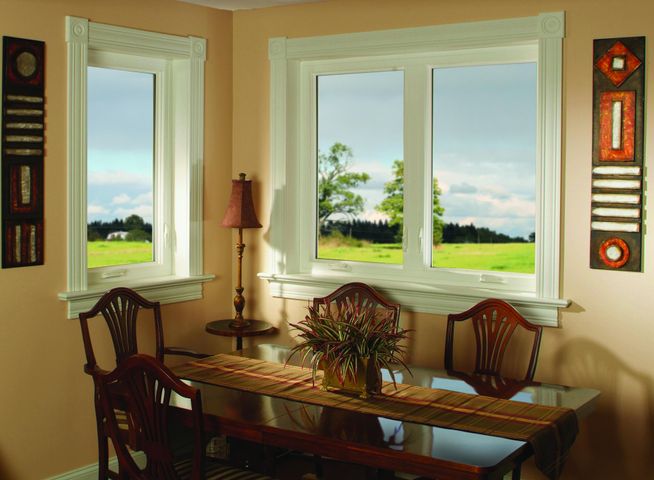
So you're thinking about replacing those old windows with some new vinyl replacement windows, and you keep seeing something called "low-e". Well what is low-e, anyway? Let's take a quick look.
Low-e stands for "low emissivity", also seen as "low thermal emissivity". Ok, that's great and all, but it doesn't really clarify much just yet. Emissivity is the effectiveness in emitting radiant energy. To think of it another way, reflectivity is the inverse (opposite) of emissivity. If a window has low emissivity (emits more radiant energy), then the window has high reflectivity (reflects more radiant heat).
Low-e coatings are applied to the glass on modern replacement windows. In the summer, this helps keep the radiant (solar) energy outside of your home. In the winter, this helps keep that same energy inside of your home, instead of going through your windows.
Most new replacement windows use "soft coat" low-e. This is more advanced than the older "hard coat" low-e. If the window is double pane, there is probably one coat of low-e on the inside of one of the panes of glass.
However, with our triple pane windows, there are two separate coats of low-e on two different panes of glass. This is one of the reasons that Windows Plus offers the most energy efficient windows in the area.
So if you'd like to learn more about how Windows Plus offers the best replacement windows in Cincinnati, give us a call! We'd be glad to answer any questions you may have.
Trusting Us Since 1982.
P.S. for more information and educational discussions on all things windows and doors, check out the new window and door blog here.
About the Business
Have a question? Ask the experts!
Send your question

